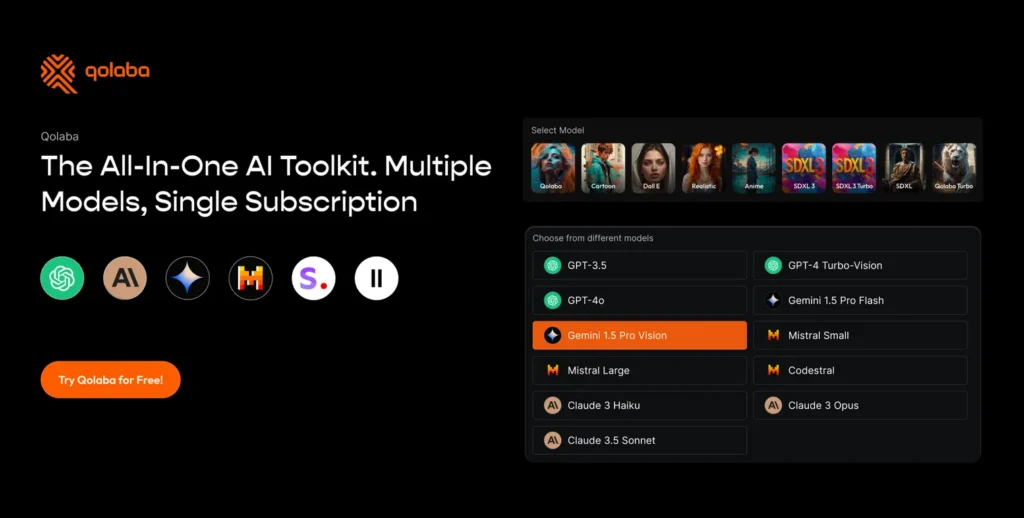It started innocently enough. Your team added ChatGPT for content creation. Then Claude for research analysis. Midjourney for image generation. Runway for video content. Jasper for marketing copy.
Eighteen months later, your finance team is drowning in AI subscription renewals, your IT department can’t track who has access to what, and team members are constantly asking “Which AI tool should I use for this?”
Welcome to subscription stack collapse, the administrative nightmare that’s transforming AI tools from productivity solutions into management problems.
The Anatomy of Subscription Stack Collapse

How AI Tool Proliferation Happens
Month 1-3: Teams typically start with one or two popular AI tools for basic content creation and research tasks.
Month 4-8: Different departments discover specialized AI tools for their specific needs. Design teams find image generators, video teams discover AI editing tools, analysts locate specialized research AI.
Month 9-18: Each use case spawns additional tool trials, team preferences diverge, and specialized requirements drive further tool adoption.
Result: Organizations commonly manage 8-15 different AI subscriptions across various departments and use cases.
The Billing Cycle Nightmare
Renewal Date Chaos: Each AI tool operates on its own billing schedule, creating administrative complexity that subscription management research shows significantly increases overhead costs.
Payment Method Fragmentation: Different tools require separate payment processing—corporate credit cards, department budgets, individual expense reimbursements, and purchase order systems—each requiring separate tracking and approval processes.
Access Management Complexity

User Provisioning Challenges
The Onboarding Problem: New team members need access to multiple AI platforms, each requiring separate account creation, role assignment, and training.
The Offboarding Risk: Departing employees may retain access to various AI subscriptions, creating security risks and continued billing for inactive accounts.
Security Issues: Teams struggle with multiple login credentials across AI platforms, often resorting to insecure password practices.
Data Governance Complications
Different AI tools have varying data retention policies, security standards, and compliance frameworks, complicating organizational data governance. Usage monitoring becomes nearly impossible across fragmented subscription stacks.
The Project Coordination Problem

Workflow Fragmentation
Multiple AI subscriptions create workflow bottlenecks that research shows significantly impact project timelines:
Common Disruptions:
- Context Loss: Moving between AI tools requires recreating context and losing momentum
- Output Integration: Coordinating results from different AI platforms requires manual effort
- Quality Consistency: Maintaining brand standards across multiple AI-generated outputs becomes challenging
- Version Control: Managing iterations across multiple platforms complicates project management
Team Communication Breakdown
Knowledge Silos: Different team members become experts in specific AI tools, creating dependencies and bottlenecks.
Training Multiplication: New features and best practices across multiple platforms require ongoing training resources, fragmenting organizational AI expertise.
Industry Patterns and Research Findings

Gartner Research indicates that organizations typically underestimate the administrative overhead of managing multiple software subscriptions by 60-80%.
Key Findings:
- Time Investment: IT departments spend increasing time on subscription lifecycle management
- Cost Visibility: Organizations lack clear visibility into total software spending across departments
- Utilization Inefficiency: Many subscriptions remain underutilized due to coordination challenges
Modern organizations manage an average of 130+ software subscriptions, with AI tools representing a rapidly growing category.
The Consolidation Solution

Platform-Based Approach
Leading organizations address subscription stack collapse through AI platform consolidation—comprehensive AI capabilities delivered through unified systems.
Consolidation Benefits:
- Simplified Administration: Single subscription management instead of multiple renewal cycles
- Unified Access Control: Consistent user management across all AI capabilities
- Integrated Workflows: Seamless transitions between different AI functions
- Streamlined Training: One platform interface instead of multiple tool learning curves
Successful Consolidation Patterns
Phase 1: Organizations audit current tool usage, identify redundancies, and map required capabilities.
Phase 2: Small teams test consolidated platforms to validate functionality and measure productivity impact.
Phase 3: Successful pilots expand organizationally with careful change management and training support.
How Qolaba Addresses Subscription Stack Collapse

Comprehensive AI Capabilities
Qolaba provides diverse AI capabilities through a single platform:
Integrated Functions:
- Text Generation: Multiple language models for different content needs
- Analysis and Research: Advanced AI for data analysis and competitive research
- Creative Content: Image generation and creative AI tools
- Workflow Integration: Seamless transitions between AI capabilities
Simplified Management
Administrative Benefits:
- Single Renewal Cycle: One subscription instead of multiple vendor relationships
- Unified User Management: Consistent access control across all AI capabilities
- Consolidated Billing: Single invoice and payment process
- Integrated Analytics: Comprehensive usage tracking and optimization insights
Enterprise Features:
- Centralized Control: IT manages all AI access through single interface
- Security Consistency: Uniform policies across all AI capabilities
- Usage Visibility: Clear organizational insights into AI utilization
Warning Signs of Subscription Stack Collapse

Administrative Red Flags
- Finance team spending significant time processing AI renewals
- IT department fielding frequent access issues across multiple platforms
- Multiple AI-related expense line items appearing monthly
- Difficulty tracking total organizational AI spending
Productivity Indicators
- Team members frequently asking which AI tool to use
- Projects slowing due to coordination between different AI outputs
- Repeated training sessions for various platform updates
- Knowledge silos developing around specific tools
Strategic Concerns
- Difficulty implementing consistent AI governance policies
- Limited visibility into organizational AI usage
- Challenges scaling AI capabilities due to subscription complexity
- Administrative overhead preventing AI innovation focus
The Path Forward

Subscription stack collapse represents a predictable evolution in organizational AI adoption. The solution isn’t reducing AI capabilities—it’s consolidating them through intelligent platform strategies.
Strategic Benefits of Consolidation:
- Administrative Efficiency: Simplified subscription and user management
- Cost Optimization: Better visibility and control over AI investment
- Productivity Enhancement: Integrated workflows and reduced coordination overhead
- Competitive Advantage: Focus on AI utilization rather than AI management
Transform subscription chaos into strategic advantage through platform consolidation.
Try Qolaba‘s unified platform approach to eliminate subscription stack complexity.





